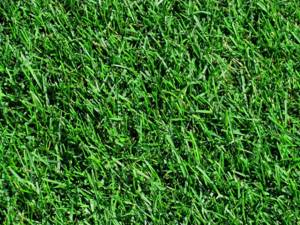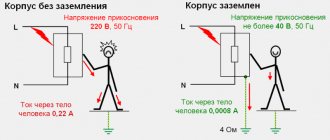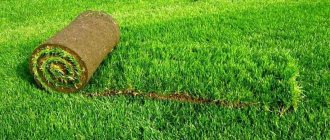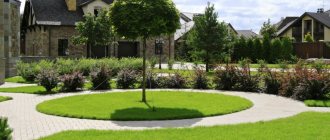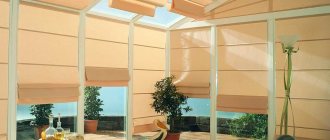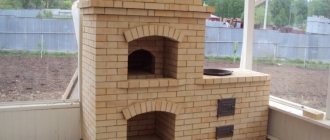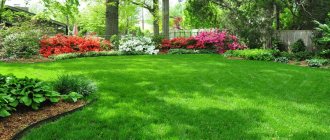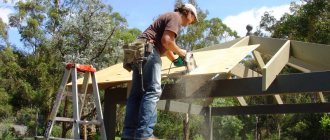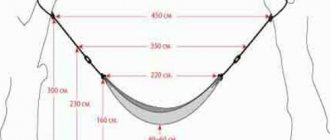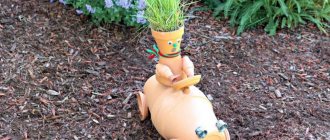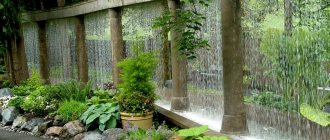What is a lawn
A lawn is an ordinary area on a territory, flat or embossed, which is sown with different types of grass, annuals and perennials, cereals and flowers, depending on the type of lawn and a person’s preferences. Today almost no dacha can live without a lawn, and there are plenty of grassy areas within the city limits. These are local areas, parks and squares, edgings of pedestrian paths, roadsides, alleys. Lawns are rightfully considered one of the best elements of landscape design, and occupy a serious place in the design of sites!
There are several types of lawns, then several subspecies, but also classification according to plants, purpose, and place of sowing. Among them:
- Sports lawns: for stadiums, tennis courts, hippodromes, golf courses, cricket, badminton, yoga grounds and others, which are quite expensive and not particularly suitable for a summer residence;
- Special lawns: for highways and railways, airfields, road slopes, hydraulic structures;
- Decorative lawns: for parks, boulevards, squares, summer cottages. These are the ones that are the most interesting for decorating your own territory, perhaps in synthesis and combination with flower beds, hedges, small architectural forms, and even a garden!
Types of lawns
Before you start preparing to decorate your lawn, you should decide on its type. It can be simply a decorative clearing, a children's playground or a place for active recreation. The choice of seeds, a suitable soil preparation option and care features will depend on its purpose.
Parterre lawns
Aesthetically valuable and expensive lawns, grass plantings on the site, on facades, and basic landscape design plans. Sowing is done near fountains and park sculptures, when decorating the entrance group, the entrance group of residential and administrative buildings. The main purpose is strictly decorative. The lawn is not intended for walking on it or placing additional gardening decor on its surface. To put it simply, it is a rather expensive pleasure, which can hardly be called universal and most suitable. It's just very beautiful and very expensive. But is such a lawn suitable for an ordinary dacha? Most likely not!
Parterre lawns are a precise, almost formulaic combination of narrow-leaved grasses, high-quality meadow bluegrass and red fescue. Despite the fact that the quality of the seeds should be at a high level with a germination rate of more than 95%, there will be significant and expensive preparation before planting. Also, it is worth paying attention to the unquestioning requirements for care, which requires certain exercises at least once every 2 days, which is very expensive. Daily watering, overseeding, mowing the lawn, fertilizing and other manipulations are not for a summer resident who travels out of town not only to take care of the lawn. His possessions include a garden, a vegetable garden, a country house that may require repairs, and, without fail, a summer kitchen, barbecue and gazebo... after all, first of all, a summer house is a vacation!
Leveling and compaction
The second mistake is not so critical. However, eliminating it will also require effort. It's about leveling and compacting. The soil will settle anyway. But it is better to do this before laying the lawn. As a rule, leveling and compacting the soil takes place in several stages and in perpendicular directions. Do not try to compact and level at one time - even a multi-ton roller will not help. This is done gradually, with pouring, drying, and re-leveling. By the way, water is a skating rink.
A wooden ladder or channel loaded with a bag of sand does a good job of “straightening”: a rope is tied to the two ends and a suitable “pulling” force is found. As a skating rink, they use gas and oxygen cylinders, planks tied to shoes, or even 2 bottles from a cooler, filled with sand and glued bottom to bottom with tape (the idea is not mine, we are working with modern professional tools). The main thing is to take your time, methodically roll and level the area several times. As a result, a trace should remain from passing through it. The soil level near the paths should be 2 cm lower than the path itself. At the end, lightly loosen the soil with a fan rake to reduce moisture loss from the lower layers.
Site preparation is the most labor-intensive and time-consuming process. And yet it’s worth it, because when a high-quality lawn is laid, the area will be transformed. Then perfectionism and the desire to do even better will come first.
Ordinary lawns at the dacha
An ordinary lawn is the best option for a summer cottage. Beautiful, versatile, with a wide purpose, clearly expressed by numerous possibilities in terms of shades and varieties of grass, that is, you can always get the desired look in color, leaf size, and shape.
The main purpose of an ordinary lawn is sowing in private areas, landscaping adjacent areas, planting in palisades, standard landscaping of the free part of the site.
An ordinary lawn is much more unpretentious than a ground lawn, both in terms of its use and maintenance. You can move around on such a lawn, relax on it with a blanket, put up garden furniture, place a children's or even an adult inflatable or frame pool, install a playground, put up a couple of goals and allow children to play football on the site. Yes, it is possible to damage it, but you will have to try hard!
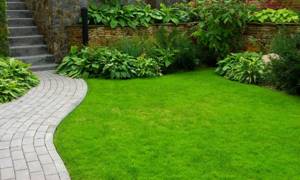
To plant an ordinary lawn at the dacha, meadow bluegrass, white clover, pasture rhinegrass, common bentgrass, meadow fescue are used - grass seeds from the middle price category, individually or in a general collection!
Caring for such a lawn is much easier, as is preparatory work on the surface. It is enough to spend up to 2 hours per acre per week to keep your lawn in perfect order!
Choosing the right lawn
Only taking into account your local conditions will you be able to correctly choose the best rolled lawn for your site. To select, you need to determine the purpose of the coating and the required quantity. Soil type and water saturation are of considerable importance.
If the simplest and most unpretentious version of grass cover is suitable for the lawn in front of the house, then other conditions are required for public places; an artificial lawn may be suitable here.
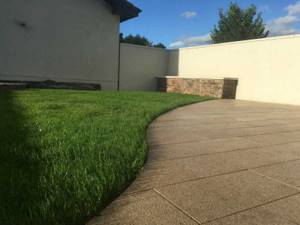
Meadow lawns at the dacha
Quite popular lawns, characterized by a variety of perennial and annual grasses and flowers. Bright representatives of the whole family, who are chosen, if not by the majority, but by a good half of the summer residents!
Meadow lawns are used to design landscape areas, zoning, and improve the overall flower picture.
Lawns with minimal fussiness, mainly consisting of real meadow and field grasses. Light mowing of the lawn, watering, fertilizing once a year... this, in principle, is all the care that is needed. Of course, due to cold winters, acid rain or self-formation of the lawn, overseeding may be necessary.
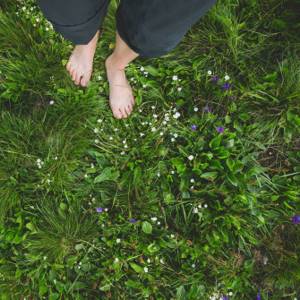
For planting, overseeding and general formation of meadow lawns, sainfoin, alfalfa, clover, bluegrass, ryegrass, and wheatgrass are used. The plots are more like wild ones, but due to care (watering, cutting, removing weeds) they are distinguished by beautiful flowering. It is worth mentioning its versatility - the lawn is decorative, at the same time a recreation area, and also a good place for children to play!
Turf cutting
The turf is cut using a lawn harvester. Cutting is carried out together with the root system and the top layer of fertile soil. The combine immediately divides the strips into 2 m long sections and rolls them up. This technology ensures gentle handling of lawn grass and its roots: they do not dry out, are not damaged, and are not injured.
Before cutting, the lawn is rolled, compacting the turf and topsoil. Due to the fact that the turf becomes denser, it is easier to transport it without damage, keeping the lawn grass alive.
Rolled lawn can be cut throughout the warm season. "Grintek" performs cutting before delivering the rolls to the customer: the cut turf is not stored in the fields and arrives fresh at the site for landscaping.
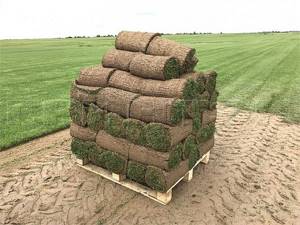
Moorish lawn at the dacha
The most beautiful and bright, fragrant and useful lawn for the rest of the vegetation in the dacha, attracting beneficial insects for pollination!
The Moorish lawn is also the easiest to care for. It is formed on the basis of a meadow, neglected ordinary lawn, which has not been looked after for several years. This is a picturesque meadow, which is additionally “equipped” with perennial and annual grasses and other plants for constant flowering. The best solution is to plant plants that bloom not at the same time, but throughout the warm season. In this way, you can achieve the ideal result, which experts call a variegated, brightly flowering lawn.
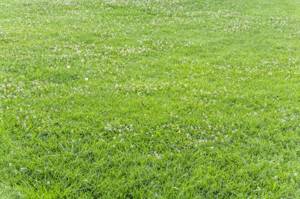
An unpretentious grass meadow, which has a more decorative order than for the location of a play and recreation area. Poppies, irises, daisies, cornflowers, calendula, coreopsis, bluebells, forget-me-nots, and flax are planted on the Moorish lawn. Already in the second year of planting a lawn, you can achieve an ideal result by constantly reseeding the annuals that you want to see at the base of your Moorish lawn this season!
At the very beginning of the formation of a lawn, it is very important to sow turf-forming plants, then grasses, and only at the end - flower seeds!
Creating a rolled lawn
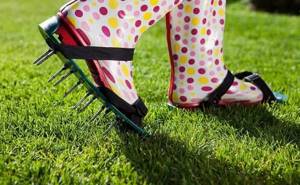
This technology involves the same processes as in the previous version. Only in this case the grass is not sown, but ready-made rolls grown at special enterprises are used.
Such rolls are rolled out over an already prepared area, joined together and cut, if necessary. After this, the lawn is watered abundantly. You need to mow such a lawn according to the same principles as described above.
Choosing a place to lay a lawn
- You should choose the most flat area, well-lit, and periodically shaded. This could be an area near the main buildings, on the border of the garden, along the fences of the territory;
- Such areas are characterized by a large accumulation of snow in winter, which is good for preserving the grass from frost. For example, the same area for lawn along the fence. More snow always drifts under vertical surfaces;
- A lawn in the garden is a good idea, but not the most practical. The grass will receive little sun and at the same time a minimum of nutrients, since the root systems of the trees will absorb them;
- It is advisable to choose a site that is either as flat as possible, or with smooth changes. It can be formed independently by arranging a small geoplastic;
- Planting a lawn requires drained or simply dry soil so that the root system does not rot in the first year!
Create a slope
So, creating a slope is not just necessary, but mandatory. There are cases when the site is flat, without a natural slope. What to do then? Everyone saw the football field. It looks completely flat, but is designed in such a way that the edges are 25–30 cm below the middle, and there is a drainage groove along the edge. At the same time, the base of the field is coarse sand with a high degree of filtration. You can plan it using an “envelope”, as you prefer. Even a slope of 1–2° will help. If the site is located in a lowland, it would be good to provide a channel that intercepts water. It is done quite simply: a ditch is dug to a depth of 15–20 cm, geotextiles are laid on the bottom, sand is placed on top, and medium-sized gravel is placed on top of it.
Lawn planting technology
- It is necessary to clean the area as efficiently as possible, right down to sifting the soil to a depth of 10-15 cm. This is difficult, but important for the roots of plants, as well as to avoid injuries after laying the lawn, because in the future children will play here, and they will know what is under them soft grass, not broken bricks or stones. That is, you need to remove all garbage and also eradicate weeds;
- It is important to create the most flat or sloping surface possible. This can also be done by moving the soil;
- If there is a need to drain the soil, this must be done. The best way to improve the landing site is gravel and sand;
- Before planting, you should apply the fertilizers recommended for the selected plants, or simply complex fertilizers;
- Before sowing, the area must be loose!
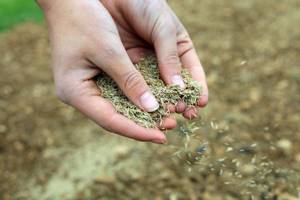
Types of lawn
There are two ways to create a lawn at your dacha with your own hands:
- The first is to plant a lawn with your own hands the old fashioned way. This method will be relatively cheaper. Especially if you do everything yourself and you have all the necessary equipment and tools.
- the second, so to speak, for the lazy, is to buy ready-made coating in rolls. This is the fastest and neatest way to decorate your garden area with a green carpet. In fact, in one day (because the grass in rolls must be laid on the same day it is delivered) you get a lawn at your summer cottage. This is not a cheap way. A lawn made from rolled turf will last you up to ten years.
Rolled lawn
You can calculate the required number of rolls by first finding out the sizes of the rolls being sold and adding another 10% in reserve. Signs of good rolled grass:
- a normal rhizome system is if there are many white roots
- should be trimmed very recently
- without spaces
- even color
- minimum weeds
- no stones in the soil
- same roll thickness
- free from fungi and pests
The base for a rolled lawn requires drainage. To do this, you need to remove the soil to a certain depth and lay crushed stone and sand in layers of 10 cm. Compact everything. Return the soil and level it out. The first roll will serve as your level, so be especially careful. Place the rolls end to end.
Do not lay the lawn overlapping or leave more than one cm between the strips. If you can’t fit the roll neatly, then it’s better to trim it.
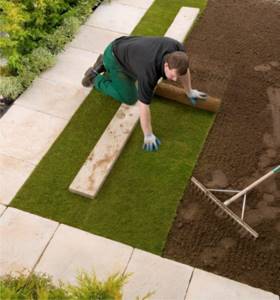
Rolled lawn
Now be patient while the lawn gets established. This may take two weeks. All this time the grass needs to be watered.
Growing your own lawn
Today we will talk about how to make a lawn at your dacha with your own hands and how to care for it with your own hands, without the involvement of specialists. First, let's figure out what types of lawn coverings there are:
- Garden (park). This lawn can be safely called the most popular among summer residents, because it is the most affordable in price and arrangement. Such a lawn is not afraid of walks, children's games and picnics. Grass mixtures for planting a garden lawn include unpretentious grasses that are not afraid of poor soil, shade or, conversely, the scorching sun, frost and drought. A garden lawn can be used to decorate the area around the pool and in the recreation area.
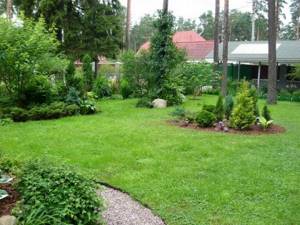
Garden lawn
- Sports. As the name suggests, the sports turf bears a lot of stress. But he copes with them easily. Sports turf is resistant to trampling and abrasion, but on the contrary, it quickly recovers. The grass is low, hard and elastic, intended for sports (there are even subtypes of sports lawn, such as football, golf or tennis lawn) and outdoor activities.
- Lugovoy. This is a natural, natural meadow, into which the necessary plants are simply sown.
- Mauritanian. It’s difficult to call it a lawn, because it doesn’t require the usual mowing. Although this is still a worthy alternative to the usual lawn. Moorish lawns are sown with flowering herbs and therefore their role is purely decorative. In grass snakes for the Moorish lawn, the grasses are selected so as not to drown out each other, but rather alternate flowering.
- Parterre (English). The most spectacular and most impractical type of lawn. Requires constant care and does not tolerate trampling. Created only to decorate and highlight the beauty of buildings or sculptures.
And one more type of covering, which stands apart from the entire list, because it is not grass either. We are talking about artificial turf. What kind of animal is this? Artificial turf is a plastic or polymer coating that imitates living grass. This covering is used in places where grass does not want to grow at all: under bushes, in parking lots, etc.
Sowing a lawn at the dacha
- Before sowing, the soil is compacted and rolled with a special roller;
- Afterwards, it is slightly loosened with a fan rake;
- Seeds are scattered manually, but without haste, to ensure even distribution over the soil surface. The norm, depending on the initial requirements, as well as the planting period, can be from 20 to 100 grams per square meter;
- For sowing, you can use the machine method, when grass seeds with a special nutritional composition are applied under pressure to the surface and lightly driven into the soil;
- With standard sowing, after adding seeds, it is recommended to roll the area again with a roller!
Soil: preparatory work
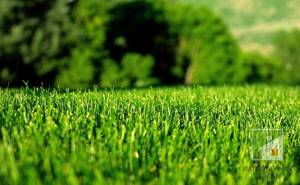
After familiarizing yourself with everything described above, you can move on to the next stage - directly arranging the seed lawn on the site. The process is as follows:
- With the onset of autumn, the territory is dug up;
- In the spring, after the soil has dried, it is cultivated to a depth of about 17 cm;
- Weeds are treated with herbicides;
- For 1-1.5 months the soil “rests”;
- Re-cultivation is carried out;
- A special mixture is added to the soil, which consists of sand and peat. For 1 sq. m. 500 gr is enough. - 1 kg. substances. If you plan to form a Moorish lawn, then humus must be added to the ground;
- The area for the future lawn is divided into squares of 4-10 square meters. m.;
- Using special rollers, the earth is thoroughly compacted;
- The soil is loosened with a rake;
- The site “rests” for 2 days
- Sowing is carried out with a seed consumption of approximately 3-5 kg. per hundred. Both manual and automated methods can be used for sowing;
- The lawn is covered with agrofibre;
- On top of the fiber, the crops are watered abundantly with water;
- After the first shoots appear, the agrofilm is removed without stopping watering;
- After the grass has grown to a height of 15 cm, the first mowing is performed. Only one person can walk on such a lawn, who, in fact, does all this work.
You need to trim the grass until the fall, until it completely stops growing. As soon as spring comes and the grass grows again to 15 cm in height, it is cut again. This procedure is performed every 14 days. The lawn will be completely ready for use 2 years after the second mowing.
Caring for a young lawn
It is necessary to care for the newly sown lawn, strictly relying on the rules of agricultural technology for the herbs and flowers that were chosen. It is necessary to normalize watering before germination, be sure to reseed the lawn, since it will be partially bald for various reasons (seeds were pecked out by birds, seeds of poor quality with inadequate germination, etc.). An important point is additional rolling of the lawn, piercing, and application of fertilizers.
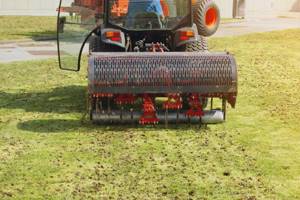
Preparation
Rolled lawn should be grown on a flat field: without holes, lowlands, hills or slopes. It is important that the climate in the area where the turf grows and in the place where it will be transplanted coincide. For this reason, he uses fields in the Smolensk region: they are located only 200 km from Moscow, and the rolled lawn grown here takes root well in the Moscow region.
Before sowing lawn grass, prepare the soil on the field:
- the fields are plowed: plowing is carried out to a shallow depth, ensuring loosening of the arable layer and the primary removal of weeds;
- disking is carried out: using a disk harrow, large clods of earth are broken, the top layer of soil is loosened and mixed;
- cultivation is carried out: the top layer of soil is once again loosened and leveled.
If there are a lot of weeds in the field, it is possible to treat the soil with chemical compounds. This treatment is carried out in advance, before sowing lawn grass, in order to prevent the effect of the used composition on cereal seeds.
Mineral fertilizers are added to the prepared soil before sowing the seeds. To speed up the emergence of seedlings, phosphorus fertilizers are used. Nitrogen compounds are used to ensure proper plant development. If the soil composition is poor, organic fertilizers are additionally used. It is also possible to add sand, peat, and correct the soil composition in other ways. The set and quantity of fertilizers are determined for each field separately based on the results of soil analysis.
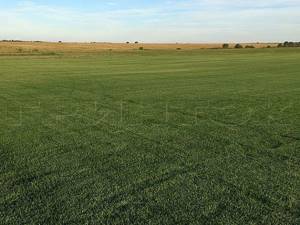
Basic garden lawn care
- Regular watering and mowing;
- Weed collection and fertilization;
- Digging with fertilizers, simultaneous sowing of grass;
- Rolling the lawn with a special roller;
- Lawn weeding and combing;
- Replacement of turf, treatment of lawn areas with diseases, abundant weeds, mosses;
- Timely removal of debris from the surface!
All these measures must be taken to obtain a high quality lawn and its smooth, beautiful surface with green grass!
Preparing the area for a lawn
Determine the boundaries of your lawn and the place where the lawn rolls will be unloaded. The turf must be laid as quickly as possible, otherwise it may deteriorate. The soil on the site must be dug up, fertilized, and loosened. Remove weed roots. The boundaries are indicated by a stretched cord, and the roundings are marked by grooves filled with sand. The best day for installation will be a fine autumn day. And one more note: you need to buy a lawn with a margin of 5 - 6% in area.
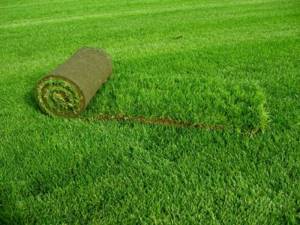
Sports turf
The best option for a children's playground or field for active recreation is considered to be a simple and convenient sports lawn. The main advantage of this small green field is its resistance to trampling.
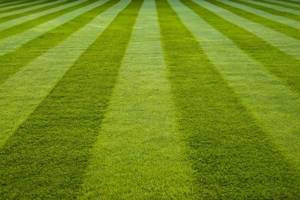
The seed material for it consists of tough, hardy and unassuming plants. Even under intense load, “bald” spots will not appear on the meadow cover.
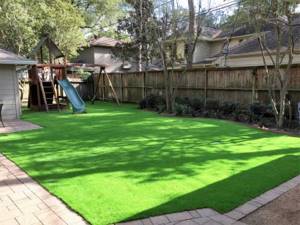
Sowing rules
For good management and uniformity of plant cover, you need not only to know how to plant your lawn correctly, but also to accurately determine the time interval. There are several simple recommendations:
- Determine the total area to purchase the required number of seed packets. It's better to buy with a reserve. Typically the consumption is 50 grams per square. When winter is over, repairs or separate replanting may be necessary, requiring half the amount originally sown;
- Seeds must be distributed equally throughout the area. The lawn is visually divided into separate fragments and seeds for them;
- Experience suggests that when sowing it is better to add a little sand, then the seeds will not stick to your palms. It's better to split them in half. Sow the plot lengthwise with one, and crosswise with the other. The edges of the territory and the area near the paths will require more seeds. If you have a sowing machine, then the task will be much easier;
- The day should be without strong wind;
- Dried soil should be slightly moistened, but not with a dense stream;
- After sowing, the upper part is loosened with a rake. Then the seeds will become inaccessible to birds;
- A roller will be needed for final rolling. Now you need to moderately moisten the soil;
- The marks are less noticeable when there is an elongated piece of cardboard underfoot.
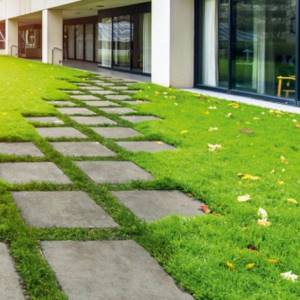
When choosing a time to work, consider the volume. So, for a large-scale and grandiose project, preliminary preparation work can begin in the winter.
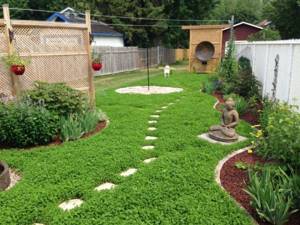
The main thing is that the sowing itself should be carried out either at the end of spring or summer. Then the shoots will develop in comfortable conditions.
